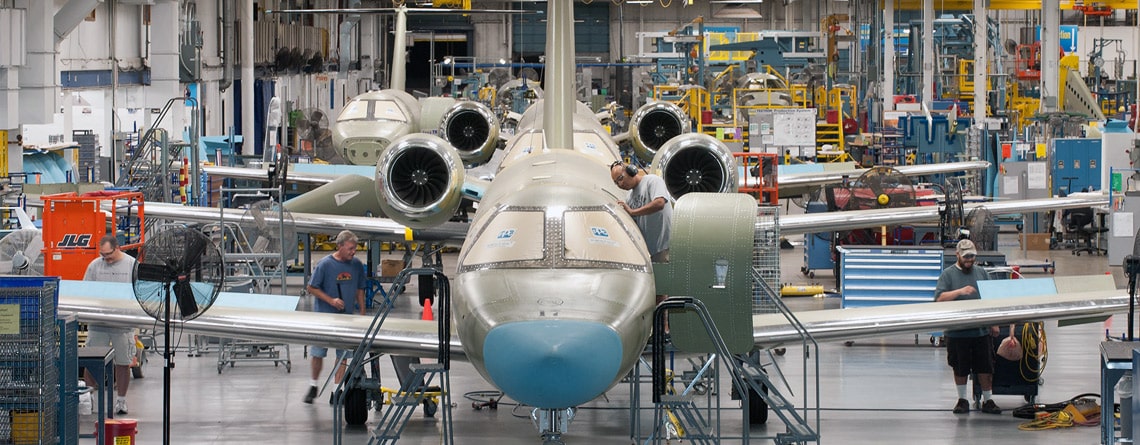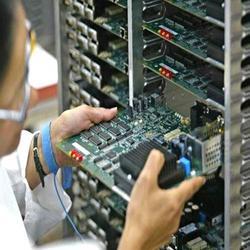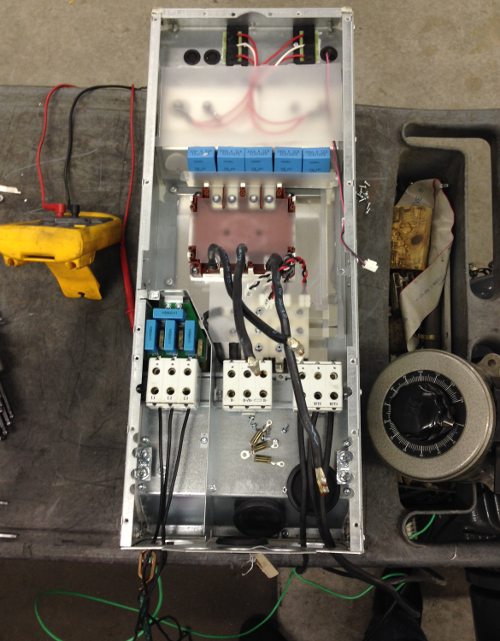AC Variable Frequency Drives
 AC variable frequency drives are also known as VFDs, VSDs (variable speed drives), AFDs (adjustable speed drives), inverters, and micro drives. AC variable frequency drives are used in AC Servo Systems, Air Compressors, Conveyor Systems, Lathes, Mills, Plastic Extrusion, Slitter Lines, Food Processing, Waste Water Treatment Systems, Submersible Pumps, HVAC Fans and Blowers, and many more applications.
AC variable frequency drives are also known as VFDs, VSDs (variable speed drives), AFDs (adjustable speed drives), inverters, and micro drives. AC variable frequency drives are used in AC Servo Systems, Air Compressors, Conveyor Systems, Lathes, Mills, Plastic Extrusion, Slitter Lines, Food Processing, Waste Water Treatment Systems, Submersible Pumps, HVAC Fans and Blowers, and many more applications.
Many manufacturers apply AC variable frequency drives to rotating equipment because variable frequency drives reduce amperage spikes upon start up of large electric motors.Choosing the right AC variable frequency drive for an application will benefit rotating equipment by providing less wear on the electric motors where applied.Adjusting the acceleration and deceleration time of electric motors can extend an electric motor’s lifespan. AC variable frequency drives provide the ability to control the frequency of starting and stopping of an AC electric motor.This ability provides a means by which an AC electric motor is only operating when needed for the equipment it’s rotating, and electric motors have a longer lifespan if they are not continuously operating when they don’t need to be.
Approximately one third of the world’s electrical energy is supplied by electric motors in fixed-speed centrifugal pump, fan, and air compressor applications. These fixed-speed applications hardly ever require the full load speed (RPM) of the electric motor in which they’re operating. By installing AC variable frequency drives to these applications, the motor speeds are reduced, and power costs can be reduced by 50% or more. Technology has reduced cost and physical size of AC variable frequency drives, and has improved performance through advances in semiconductor switching devices, simulation, control techniques, and control hardware and software.
Power Savings Via AC Variable Frequency Drives
 AC variable frequency drives are used to reduce power savings in food processing, plastic extrusion, waste water treatment, and many other applications.AC variable frequency drives operate as load controls within applications that may accomplish up to 50% reduction in energy costs. Electric motors will turn at a rate proportional to the frequency of the alternating current (AC) applied to it.
AC variable frequency drives are used to reduce power savings in food processing, plastic extrusion, waste water treatment, and many other applications.AC variable frequency drives operate as load controls within applications that may accomplish up to 50% reduction in energy costs. Electric motors will turn at a rate proportional to the frequency of the alternating current (AC) applied to it.
The majority of AC variable frequency drives in the market today contain electronic circuitry that converts 60 Hertz Line power into direct current. The variable frequency drive converts this line power into a pulsed output voltage that duplicates varying alternating current to a desired frequency (speed).A properly applied AC variable frequency drive when paired with an AC electric motor, will significantly reduce operating costs. This is particularly true for variable torque loads such asFans,Blowers, andPumps.Blowers, for example, are often used with dampers to control air flow. These dampers may operate either manually or automatically. When dampers are closed, 50% of the electric motor current will drop to approximately 60% of Full Load nameplate current. By utilizing an AC variable frequency drive in this application, current draw in the motor will be reduced 30% for every 10% drop in speed. The same electric motor operating froman AC variable frequency drive at 50% speed, will draw approximately 20% of the full load current.
Example Application: AC Variable Frequency Drives
 A 10 horsepower AC electric motor, rated 90% efficient, operating across the line without an AC variable frequency drive, with the dampers operating between 50 70%, for 2000 hours per year will require 11,996 KWH. If the KWH charge is $.08 per KWH, the cost to run this motor will be: $1,248.00 annually.The same 10 horsepower electric motor operating from an AC variable frequency drive, between 50 70% speed for 2000 hours per year will require 4,676 KWH. Operating cost at the same KWH rate will be: $432.00 per year. This represents a savings of $816.00 per year and should be enough to pay for the AC variable frequency drives investment and installation costs, within the first 12 months of operation.If any electric motor application operates more hours than in the above example, and/orthe KWH charge is higher, the savings will quickly compound.
A 10 horsepower AC electric motor, rated 90% efficient, operating across the line without an AC variable frequency drive, with the dampers operating between 50 70%, for 2000 hours per year will require 11,996 KWH. If the KWH charge is $.08 per KWH, the cost to run this motor will be: $1,248.00 annually.The same 10 horsepower electric motor operating from an AC variable frequency drive, between 50 70% speed for 2000 hours per year will require 4,676 KWH. Operating cost at the same KWH rate will be: $432.00 per year. This represents a savings of $816.00 per year and should be enough to pay for the AC variable frequency drives investment and installation costs, within the first 12 months of operation.If any electric motor application operates more hours than in the above example, and/orthe KWH charge is higher, the savings will quickly compound.
Manufacturers across the globe capitalize on AC variable frequency drives to save money on power consumption, increase quality control, decrease production downtime, and improve overall efficiency. To learn more about AC variable frequency drives or for repair and replacement quotes, contact Precision Electric, Inc.















